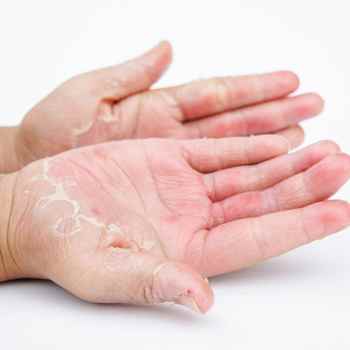Contact Dermatitis Q & A
What is contact dermatitis?

Contact dermatitis is a type of rash that develops when you’re exposed to a substance that causes your skin to react.
Contact with these substances can trigger a variety of skin conditions, including:
- A red rash or itching
- Dry, scaly, or cracked skin
- Blisters or bumps that may crust or ooze
- Burning, tenderness, or swelling
There are two types of contact dermatitis, irritant and allergic. Rashes caused by irritant atopic dermatitis are the result of skin irritants such as solvents, detergents and bleach, and fertilizers or pesticides.
Allergic atopic dermatitis is an allergic reaction to a substance.
What causes allergic atopic dermatitis?
Allergic contact dermatitis develops when you’re sensitive to an allergen and your immune system triggers a skin reaction. This type of allergic reaction remains in the area exposed to the allergen, but it can be triggered by things you ingest, like medicine, flavorings, or certain foods.
Common substances triggering allergic atopic dermatitis include:
- Nickel, commonly used in accessories like jewelry
- Medications, like antihistamines and antibiotics
- Formaldehyde, often used in clothing and disinfectants
- Plants, such as poison ivy
Airborne substances like insecticides and ragweed pollen can also cause contact dermatitis. It’s also common for some children to develop atopic dermatitis from exposure to sunscreens, baby wipes, and diapers.
How is contact dermatitis diagnosed and treated?
Your allergist at Allergy Testing Center works closely with you to diagnose and treat your contact dermatitis. First, they recommend creams, ointments, or oral medications to relieve your skin irritation.
To identify the cause of your rash, your allergist reviews your activities and anything you may have come in contact with that led to your skin reaction. This list should include anything you may have touched during the days leading up to your first symptoms.
Based on your symptoms and medical history, your allergist may perform a patch test. This type of allergy testing involves wearing a patch on your skin for 48 hours to identify possible allergens. You return two days after the patches are placed to remove the patches and for an initial evaluation and then two days after removing the patches for evaluation to see if a reaction has occurred.
Once your allergy is determined, your allergist creates a treatment strategy to avoid future outbreaks. These might include avoiding your triggers or taking allergy medications. Call Allergy Testing Center or schedule an appointment online to learn more today.
